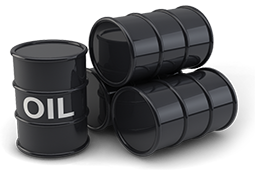
Kermanshah Refinery Leading Environmentally

“The installation of online monitoring systems on the output of industrial wastewater treatment system and furnace chimneys, expansion of green areas around the refinery to more than 21 hectares and using treated industrial wastewater for irrigating the green areas are among the most important measures to decrease pollution at the refinery,” ILNA also quoted Nasser Ashouri as saying.
“Standardizing the output of furnace chimneys, double sealing the roof of tanks to reduce the evaporation of volatile hydrocarbons and establishing the environmental management system of ISO 14001: 2015 have been other measures undertaken to reduce environmental pollutants,” he said.
The refinery also has programs underway, including for changing furnace burners and the construction of a vacuum distillation unit, as well as studies on the construction of more quality units and development of production capacity.
“New units to produce quality products require $300 million,” Ashouri said, adding that the refinery seeks to produce high-octane gasoline, low sulfur fuel oil, and gas oil with sulfur below 50 ppm, all of which can help preserve the environment.
Kermanshah’s refinery produces 100,000 liters of liquid petroleum gas, 750,000 liters of gasoline, 437,000 liters of kerosene and 750,000 liters of fuel oil per day. The daily operational capacity of the refinery is 25,000 barrels.
Located in western Iran, Kermanshah Oil Refinery is the second oldest oil refining complex in the country after Abadan Refinery.



Trump weighs using $2 billion in CHIPS Act funding for critical minerals

Codelco cuts 2025 copper forecast after El Teniente mine collapse

Electra converts debt, launches $30M raise to jumpstart stalled cobalt refinery

Barrick’s Reko Diq in line for $410M ADB backing

Abcourt readies Sleeping Giant mill to pour first gold since 2014

Nevada army depot to serve as base for first US strategic minerals stockpile

SQM boosts lithium supply plans as prices flick higher

Viridis unveils 200Mt initial reserve for Brazil rare earth project

Tailings could meet much of US critical mineral demand – study

Kyrgyzstan kicks off underground gold mining at Kumtor

Kyrgyzstan kicks off underground gold mining at Kumtor

KoBold Metals granted lithium exploration rights in Congo

Freeport Indonesia to wrap up Gresik plant repairs by early September

Energy Fuels soars on Vulcan Elements partnership

Northern Dynasty sticks to proposal in battle to lift Pebble mine veto

Giustra-backed mining firm teams up with informal miners in Colombia

Critical Metals signs agreement to supply rare earth to US government-funded facility

China extends rare earth controls to imported material

Galan Lithium proceeds with $13M financing for Argentina project

Kyrgyzstan kicks off underground gold mining at Kumtor

Freeport Indonesia to wrap up Gresik plant repairs by early September

Energy Fuels soars on Vulcan Elements partnership

Northern Dynasty sticks to proposal in battle to lift Pebble mine veto

Giustra-backed mining firm teams up with informal miners in Colombia

Critical Metals signs agreement to supply rare earth to US government-funded facility

China extends rare earth controls to imported material

Galan Lithium proceeds with $13M financing for Argentina project

Silver price touches $39 as market weighs rate cut outlook

















